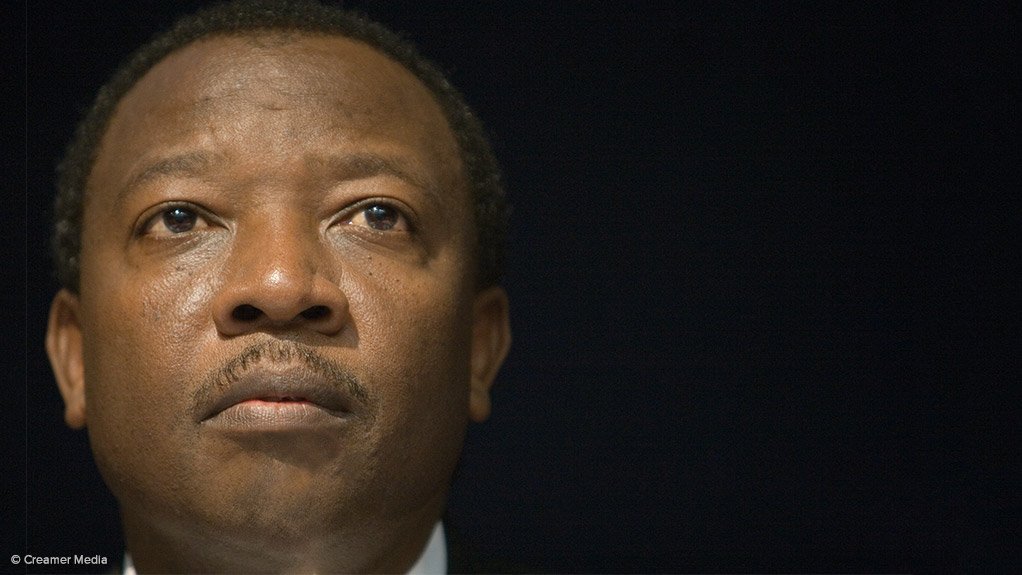JOHANNESBURG (miningweekly.com) – Anglo American company Kumba Iron Ore on Tuesday reported 20% higher headline earnings of R3-billion in the six months to June 30, when its financial performance was supported by strong cash generation.
On a normalised basis, the R9.41 headline earnings a share were 4% lower on 11%-less R18.2-billion revenue.
Kumba, which will from September 1 be led by new CEO Themba Mkhwanazi following Norman Mbazima’s decision to step down after four years, achieved a cash breakeven price of $34/t, which was well within the targeted range.
“The iron-ore price remains under pressure,” Mbazima told Mining Weekly Online.
The price averaged $52/t in the period.
In the light of price constraint, the company has ceased mining at the high-cost Thabazimbi mine, reconfigured its core Sishen iron-ore mine into a lower cost pit shell and ramped up low cost production at the newer Kolomela mine.
Kumba’s cutting of R3.1-billion off controllable costs and a suspension of the dividend enabled the company to generate strong free cash flow, which supported substantial debt reduction and strengthened the balance sheet to a net cash position of R548-million.
“Kumba is now cash positive, has good financial flexibility and is more resilient and better positioned to cope with the lower prices,” Mbazima told an early morning media conference in which Creamer Media’s Mining Weekly Online participated.
Consistent with the revised Sishen mine plan, production was cut by 21% to 17.8-million tonnes.
Kumba suffered two fatalities in the half-year when Grahame Skansi, a drill operator at Kolomela mine, and Gideon Dihaisi, a learner electrician at Sishen mine, lost their lives.
The company reported that the first half of 2016 had been “exceptionally challenging” operationally, as a result of the transition to the revised 2016 mine plan at Sishen and the consequential 31% workforce reduction.
“It’s pleasing that this took place without any work stoppages and labour relations have been stable throughout this period,” Mbazima added.
The declining iron-ore market continues to hit the business with prices not expected to recover in the short to medium term.
Upped productivity is providing confidence that the full-year production guidance of 12-million tonnes for Kolomela and 27-million tonnes for Sishen will be attained.
Increased productivity at Sishen had been achieved through the use of the “right equipment and the right people in the right places”, Mbazima commented in response to Mining Weekly Online.
Benchmarking the direct operating hours of trucks with mines around the world has pointed to the need to attain 18 hours a day of direct operating hours.
“In one month, we were able to push from 11 hours a day to 15 hours a day. So you can see that productivity is beginning to approach the world benchmark.
On the prospect of more retrenchments, Mbazima said: “We’re finished with the people issues for the moment and the concentration now is on driving actual efficiency rather than reducing staff.”
He said that study work on low-grade beneficiation plants pointed to low capital requirements and “very attractive” returns.
The progressing modular beneficiation plant at Kolomela will be commissioned in 2017 to contribute 0.7-million tonnes to the 13-million tonnes production target.
Waste guidance remains at up to 48-million tonnes in 2016, and up to 55-million tonnes from 2017 to 2020.
Estimated 2016 capital expenditure is R120-million with total project capital estimated at R420-million.
Edited by: Creamer Media Reporter
EMAIL THIS ARTICLE SAVE THIS ARTICLE
To subscribe email subscriptions@creamermedia.co.za or click here
To advertise email advertising@creamermedia.co.za or click here













